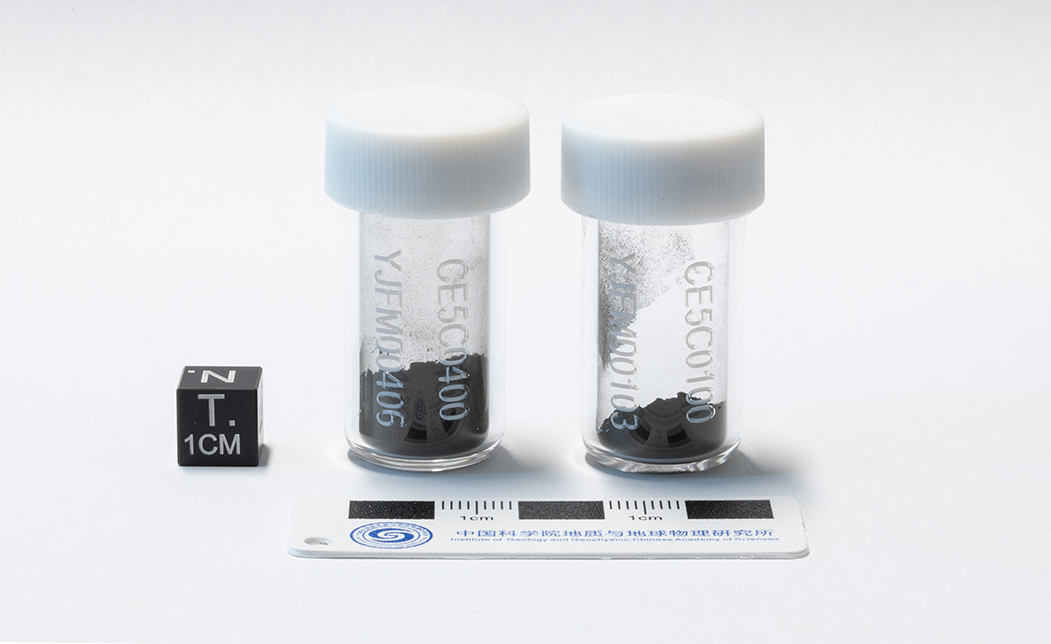

On December 16, 2020, the return capsule of the Chinese National Space Administration’s Chang'e 5 moon probe landed in the grasslands of Inner Mongolia, an autonomous region in China. The capsule carried just under four pounds of moon rocks and soil. Now, a team of Chinese scientists has recently announced the discovery of water molecules in those lunar samples. Their study was published in the journal Nature Astronomy this past July.
“A team of Chinese scientists has identified a kind of mineral with water in its molecular structure in a lunar sample retrieved by Chang'e 5,” the Chinese Academy of Sciences says in a statement.
The team used X-ray diffraction to analyze the grains of moon soil, in which they found a lunar mineral dubbed ULM-1 whose mass is made up of more than 40 percent water and also includes ammonia.

“This is a new form of water stored on the moon,” Xiaolong Chen, co-author of the study and physics researcher at the Chinese Academy of Sciences, tells New Scientist’s Alex Wilkins.
In the words of CNN’s Jessie Yeung, water on the moon is nothing new. Though the samples brought back by the U.S. Apollo missions seemed to show that the moon was dry and lifeless, a recent study suggests that water or hydroxyl may be trapped in glass beads on the moon's surface—and solar winds could turn the hydroxyl (chemical formula OH) into H2O, according to Yeung. And both American and Indian spacecrafts separately registered what is believed to be water on the moon’s surface.
This recent discovery, however, marks the first time scientists have found whole molecules of H2O in lunar samples. The findings suggest that "water molecules can persist in sunlit areas of the moon in the form of hydrated salts," the authors write in the study.
The discovery furthers our understanding of the resources available on the moon, which could be vital to future space missions and even lunar habitations. Ammonia, for example, is an ingredient in rocket fuel, notes Live Science’s Ben Turner.
The lunar samples could also shed more light on the moon’s formation. For example, the similarity between the mineral and terrestrial volcanic rocks suggests that ULM-1 was produced by now extinct lunar volcanoes, writes Live Science.
Get the latest stories in your inbox every weekday.

Margherita Bassi is a trilingual storyteller and freelance journalist with a particular interest in ancient history, astronomy and human interest stories.